Cash
Through a current account
Electronic card (Visa, Master, Dina, etc.)
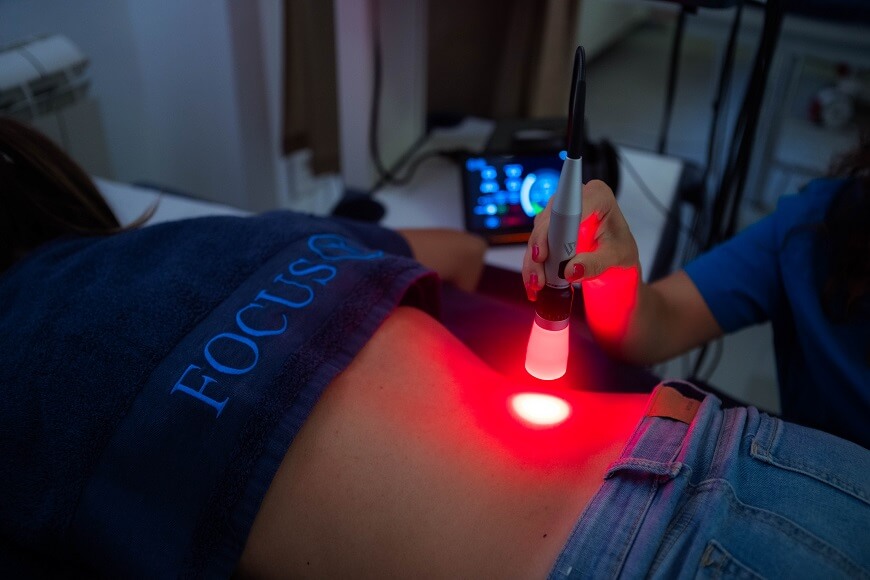
Fokus Fizical 100% guarantees fast and effective healing
Super DISCOUNT! 20% on all therapies in Oktober!
Do not treat yourself over the Internet! Make an appointment via Viber now!
Do you suffer from back pain? Almost everyone has experienced back pain at least once in their lifetime. The causes of back pain can vary, but statistics show that the most common problem is the "slipping" of an intervertebral disc.
Disc herniation, as this medical condition is called, is a very common ailment. The pain caused by disc herniation is no different from "ordinary" back pain, which is why it's essential to contact us as soon as possible to receive an accurate diagnosis.
Disc herniation is a spinal column disorder that occurs due to the altered condition of the disc—a small intervertebral "cushion." The disc's condition and function change due to degenerative processes, and often disc herniation is also a consequence of injury.
When one or more discs shift from their intervertebral space, they press on surrounding nerves, leading to symptoms. Those suffering from this condition most commonly complain of severe pain in the leg or arm.
Disc displacement usually occurs in the lower lumbar part of the back, affecting 70 to 80 percent of those affected. However, the cervical and thoracic regions of the spine are not immune to disc herniation. It's not uncommon for a patient to have disc herniation localized in all three parts of the spine, although this is a rare condition.
Disc herniation predominantly affects people in their most productive years, between the ages of 35 and 45, equally affecting both men and women.
In the early stages of disc herniation, pain usually appears in the affected segment of the spine, which most patients ignore. Painkillers may relieve or alleviate the pain, but this does not mean the problem is resolved. Most endure this discomfort until it becomes difficult to move. Therefore, timely diagnosis of disc herniation is very important. It is carried out using magnetic resonance imaging (MRI), which scans the affected part of the spine. MRI is the only necessary diagnostic method because it provides a clear image of the extent of changes and damage to one or more discs.
Sciatica (sciatica) is a set of symptoms that can result from the compression of one of the five spinal roots that together form the sciatic nerve or from inflammation of the sciatic nerve. It is the longest nerve in the human body.
If you suffer from sciatica, the pain usually occurs suddenly and is present in the lower back, in the gluteus, along one leg, and is accompanied by numbness.
Back pain can manifest in various ways. There are three main types of back pain: acute, subacute, and chronic back pain.
Acute back pain is temporary and lasts for a few days, after which it disappears without leaving any consequences. It is generally mild to moderate, and its intensity does not significantly prevent a person from performing daily activities. However, some more intense pain of this type can limit mobility, but only for a short period.
Chronic back pain is more serious, primarily because it lasts for a longer period. It develops gradually, increasing in intensity, and the condition of a person with chronic pain requires professional evaluation and therapy. This type of pain usually lasts for months, affects mobility and daily life, but many people "learn" to live with it.
Subacute back pain can appear suddenly or develop over time and lasts for several weeks.
Some symptoms that may accompany both types of back pain, especially when the pain is more intense, include dizziness, pain in the arms and legs, insomnia, weight loss, depression, and similar issues.
The pain may sometimes be intense and widespread, while at other times, it is focused on a specific point in the back. Depending on where the back pain is predominantly located, we can again distinguish between various types of problems.
Disc Herniation
The most common symptoms of disc herniation include:
Sciatica
A patient suffering from sciatica feels pain in the gluteus that radiates to the hip of the same leg. The pain can extend down to the calf and even to the toes. The pain is accompanied by tingling. This painful condition is also characterized by an increase in pain when sneezing, coughing, or laughing.
Sciatica is very difficult to prevent, and if not treated properly, there is a high chance that it will recur with even stronger or similar symptoms. Some conditions require surgical intervention (about 1.5% of patients with disc herniation need surgery).
Although we mentioned that poor posture is the most common problem causing back pain, it is essential to expand and clarify everything that leads to back issues. Primarily, it involves insufficiently active muscles, which is a problem for most people today.
People do not move enough; they spend time sitting in offices (and this is most often improper sitting), which inevitably leads to pain in some part or even the entire back. Simply walking daily is not enough—the body needs to be activated through workouts several times a week so that the muscles work properly.
Another serious cause of back pain is body weight. A body carrying excess weight puts a strain on the back and spine, leading to pain. Stress is also one of the causes, as nervous tension can indeed cause physical pain that you feel in your back.
Sometimes even inadequate footwear can cause back pain due to the unnatural position of the feet, which reflects on the spine. The problem is usually with heels that are too high, poor-quality soles, and excessively flat shoes. The best shoes for the back are those with a slightly elevated heel.
The most common causes of sciatica are prolonged sitting, physical inactivity, obesity, improper physical activity (lifting heavy objects or yoga), wearing high heels, spinal canal stenosis (narrowing of the canal in the lower back), degenerative changes in the intervertebral disc (damage to the disc located between two vertebrae), etc.
Lifting heavy objects or performing an improper movement can cause the disc's ring to rupture, which presses on the corresponding nerve root, causing the patient to feel pain radiating down the leg.
Will back physical therapy hurt?
Physical therapy for the back does not aim to injure the patient or increase the pain, but to relieve the pain. However, as you regain your mobility, pain levels can sometimes fluctuate. During physical therapy, the patient may experience temporary pain from using muscles that are weakened or recovering. This is a normal response of the patient's body to therapeutic treatments.
Good communication with our physical therapist will help reduce any discomfort. We will definitely do our best to ensure that you do not feel even the slightest temporary pain during the physical therapy treatment.
What type of back pain is not treated with physical therapy?
Spinal pain caused by various infections or malignancy is NOT treated with physical therapy.
How long does one back physical therapy last?
The duration of one physical therapy session ranges from 45 to 90 minutes.
How long does back pain treatment take?
Treatment of back pain with physical therapy lasts from 2 to 3 weeks. However, the duration of treatment depends on the individual condition of each patient, so in some situations a smaller number of physical therapies and a shorter time are required.
Therapeutic day (2 classic physical therapy procedures, hilt lasers, decompression table)
7.000 din -
5.500 din
7.000 din -
5.500 din
Spinal decompression TRITON table
4.000 din
4.000 din
Package - spinal decompression TRITON table
35.000 din
35.000 din
Physical treatment for facial paresis
4.000 din
4.000 din
Physical therapy for lumbar spine
4.000 din
4.000 din
Physical therapy for cervical spine
4.000 din
4.000 din
Cash
Through a current account
Electronic card (Visa, Master, Dina, etc.)
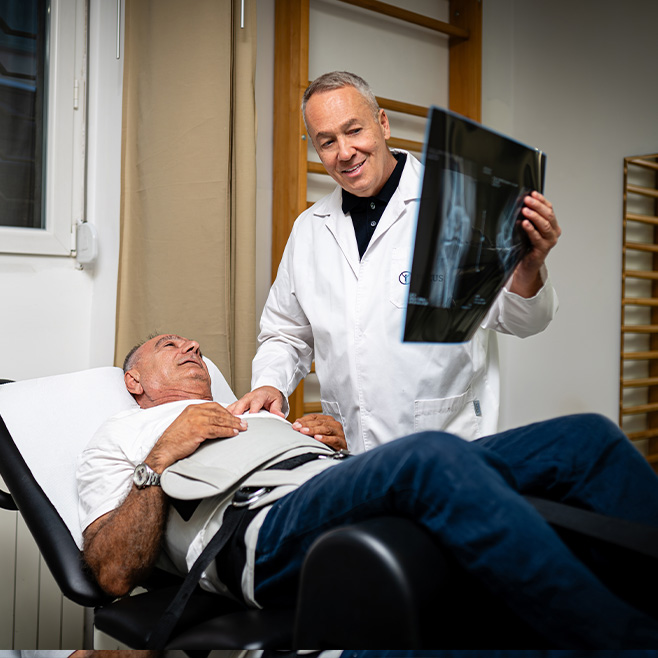
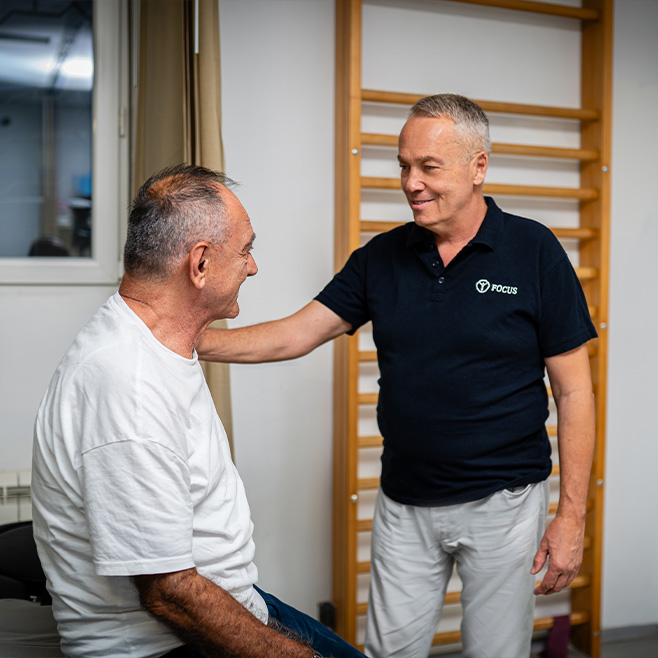
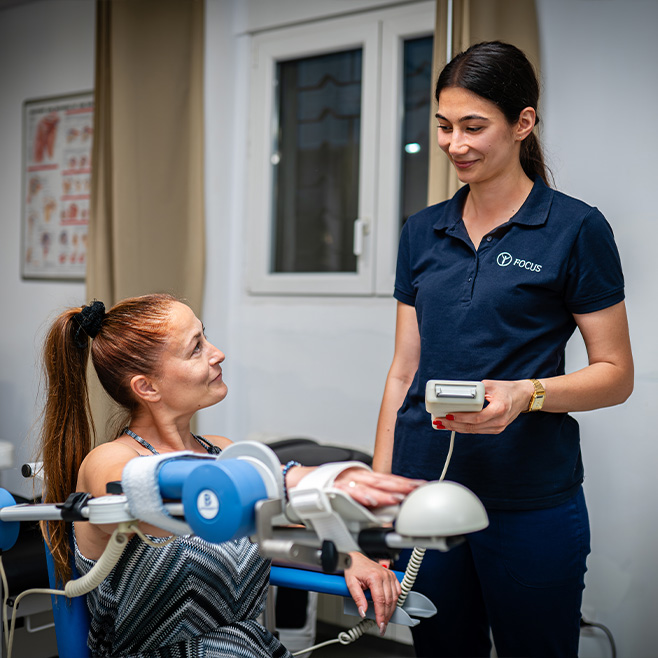
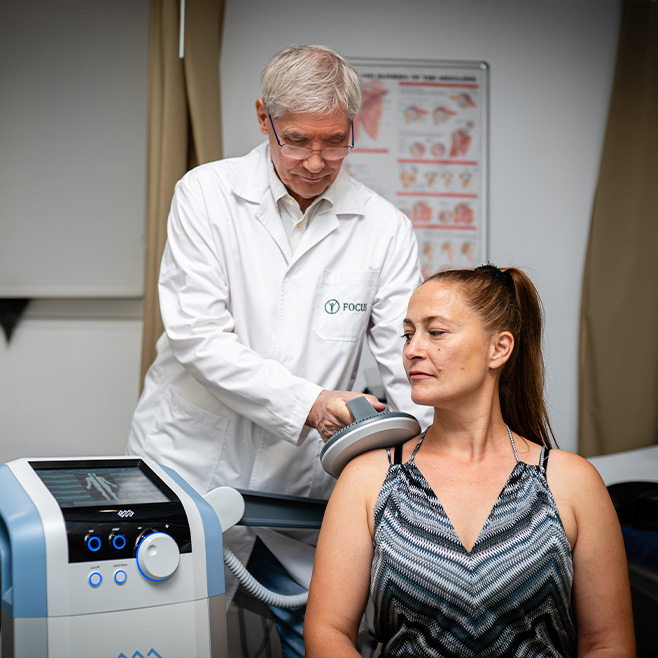
See the experiences of our satisfied patients who successfully recovered with the help of our physical therapy. Get acquainted with the testimonies of patients who faced various joint injuries, sports knee injuries, back injuries and similar problems, which we quickly, efficiently and successfully treated.
Aesthetic surgery
Focus Fizikal is a leading private clinic for physical therapy in Belgrade. For more than 10 years, we have been providing high-quality services that enable quick recovery and healing of our patients.
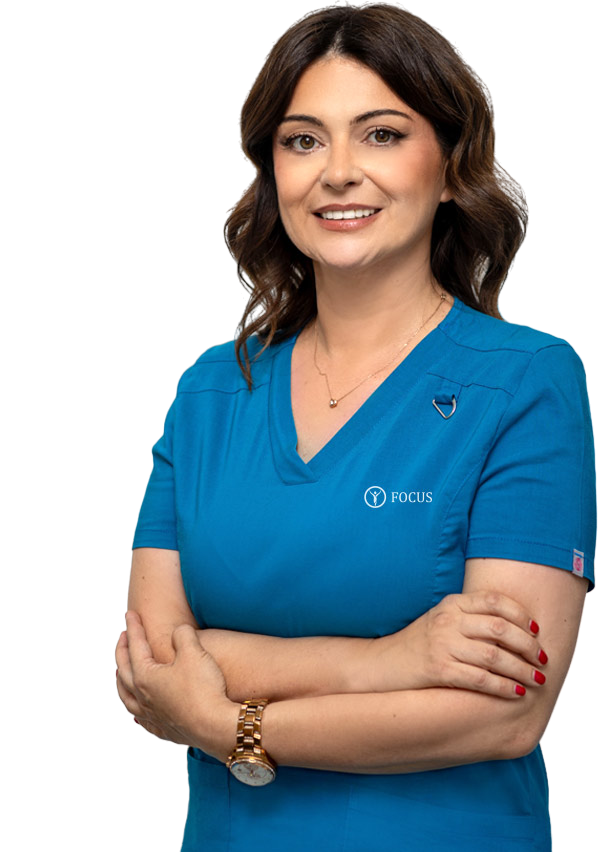
For all our current and future patients, we have made it possible to schedule an appointment online.